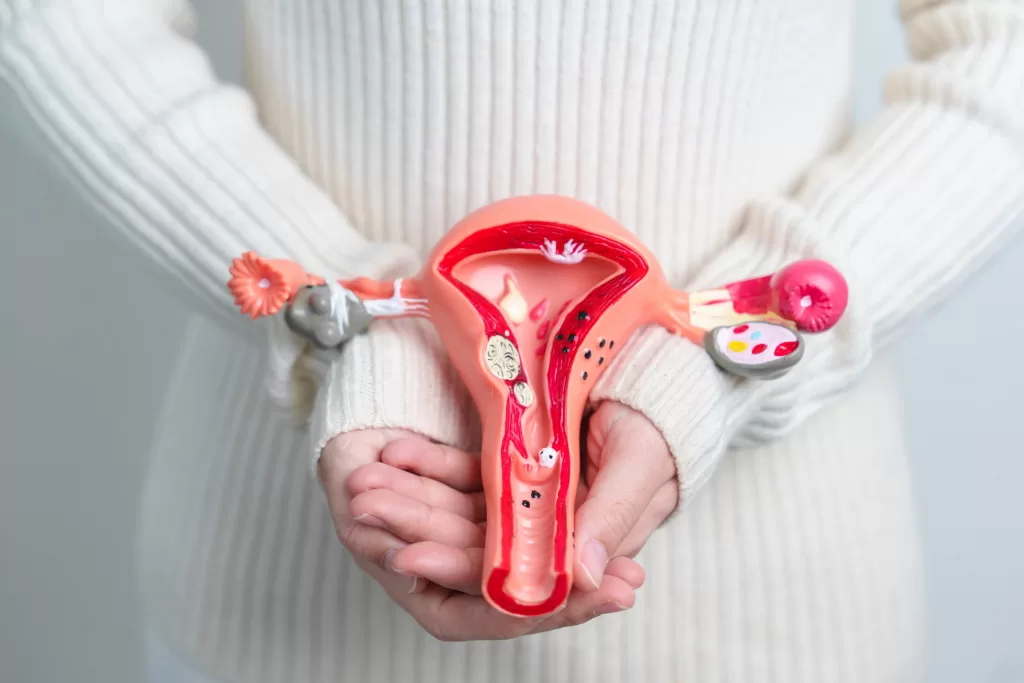What is a hysterectomy and when is it needed?
Medically Reviewed by Dr Aifric Boylan
Last updated on 09.10.2024
A hysterectomy is a surgical procedure to remove a woman’s uterus (womb), usually performed by a gynaecologist. It is commonly performed to treat various conditions affecting the uterus, such as fibroids, heavy or abnormal bleeding, endometriosis, chronic pelvic pain, or cancer. Once the uterus is removed, a woman will no longer have periods or be able to become pregnant.
Types of hysterectomy
There are different types of hysterectomy. Which one you have depends on how much of the uterus and surrounding tissue needs to be removed.
- Total hysterectomy: this is the most common type, where the entire uterus and cervix are removed.
- Partial/subtotal hysterectomy: only the upper part of the uterus is removed, leaving the cervix in place.
- Radical hysterectomy: typically performed to treat cancer and involves removing the uterus, cervix, part of the vagina, and sometimes surrounding tissues like the ovaries and fallopian tubes.
The type of hysterectomy you have will depend on the reason for the surgery and your overall health.
Why would you need a hysterectomy?
Hysterectomy may be recommended for a variety of medical reasons, including:
- Fibroids: these are non-cancerous growths in the uterus that can cause heavy bleeding or pain.
- Endometriosis: a condition where tissue similar to the lining inside the uterus (endometrium) grows outside of it, leading to pain and irregular bleeding.
- Chronic pelvic pain: if other treatments like tablets, injections and physiotherapy haven’t helped, a hysterectomy might be considered.
- Abnormal uterine bleeding: heavy or irregular periods that don’t respond to other treatments.
- Uterine, cervical, or ovarian cancer: a hysterectomy is necessary if cancer is present or suspected.
- Prolapsed uterus: this occurs when the uterus slips down into the vaginal canal, often causing discomfort or urinary issues.
How is a hysterectomy performed?
There are several approaches to performing a hysterectomy:
- Abdominal hysterectomy: the uterus is removed through a cut in the lower abdomen.
- Vaginal hysterectomy: the uterus is removed through an incision made in the vagina.
- Laparoscopic or robotic hysterectomy: minimally invasive procedures using small incisions and special tools, sometimes assisted by a robotic arm for precision.
The recovery time will vary depending on the type of surgery. Typically, abdominal hysterectomies require a longer recovery period (up to 6-8 weeks), while vaginal and laparoscopic hysterectomies may have shorter recovery times (around 3-4 weeks).
What to expect after the surgery
Recovery after a hysterectomy depends on the type of surgery and your overall health. Here’s what you can typically expect:
- Hospital stay: most women stay in the hospital for 1-2 days, although some may require longer.
- Pain and discomfort: it’s common to experience some pain, especially around the incision site. Your doctor will prescribe pain relief to manage this.
- Rest and recovery: you’ll need to rest for a few weeks, avoiding heavy lifting and strenuous activity.
- Menopause symptoms: If your ovaries are removed during the procedure, you may enter menopause and experience symptoms such as hot flashes, mood swings, and vaginal dryness.
Benefits and risks
A hysterectomy can significantly improve the quality of life for women suffering from chronic pain, heavy bleeding, or other serious conditions. It’s considered a permanent solution for many issues related to the uterus. However, like all surgeries, it comes with risks, including:
- Infection
- Blood clots
- Reaction to anaesthesia
- Injury to nearby organs
It’s also important to note that a hysterectomy is a major, irreversible surgery. It’s usually only considered after other treatments have been tried. It shouldn’t have any affect on your sex life. Additionally, after a hysterectomy, a woman will no longer be able to have children.
There is evidence that a hysterectomy can lead to earlier menopause, even if your ovaries aren’t removed.
Once you’ve had a total or radical hysterectomy, you don’t require pap smears (cervical screening tests) in the future.
Alternatives to hysterectomy
In some cases, less invasive treatments may be available. Options include:
- Medications to manage symptoms like heavy bleeding or pain. This can include hormonal contraception like The Pill, an intrauterine device or implants.
- Uterine fibroid embolization (blocking blood flow to fibroids).
- Endometrial ablation (destroying the uterine lining to reduce bleeding).
Your doctor will discuss these options and help you weigh the benefits and risks.
A hysterectomy can be life-changing for women dealing with chronic pain, abnormal bleeding, or serious conditions like cancer. However, it’s important to explore all treatment options with your doctor before deciding on surgery. If a hysterectomy is right for you, rest assured that it’s a common procedure with a high success rate, and your doctor will guide you through the recovery process.
Getting a Mental Health Care Plan in Australia: Your Guide
Getting a Mental Health Care Plan in Australia: Your Guide Mental health matters—and if you’re feeling overwhelmed, anxious, or down, a mental health care plan can help. But what is it, and how do [...]
UTI Symptoms and Treatment: What You Need to Know
UTI Symptoms and Treatment: What You Need to Know Urinary Tract Infections (UTIs) are common, uncomfortable, and often disruptive. But what exactly are the signs to watch for, and how can you get relief [...]
Free Mental Health Care Plan Online | Bulk-Billed by Qoctor
Free Mental Health Care Plan Online | Bulk-Billed by Qoctor Discover how to get a free, bulk-billed Mental Health Care Plan (MHCP) in Australia through Qoctor's telehealth service. Accessing [...]






